Transportation Management Center Video Recording and Archiving Best General Practices
Appendix. Sample Agreements and Policies
Figure 20: Sample scan. Closed Circuit Television (CCTV) Agreement (page 1 of 2).
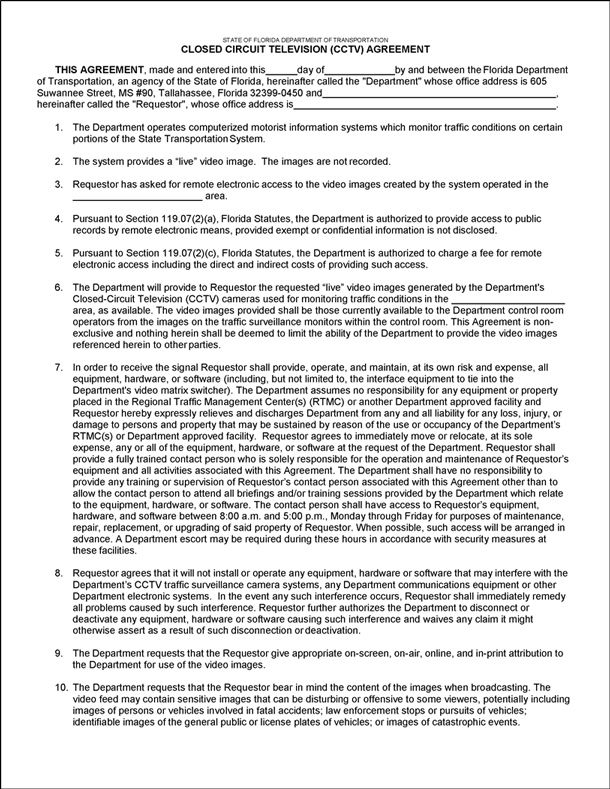
(Source: Florida Department of Transportation)
Figure 21: Sample scan. Closed Circuit Television (CCTV) Agreement (page 2 of 2).
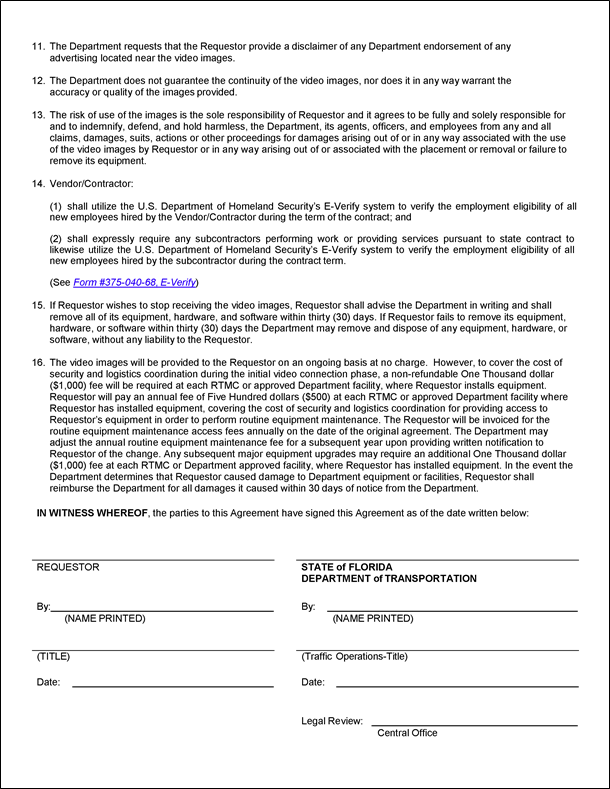
(Source: Florida Department of Transportation)
Figure 22: Sample scan. Camera Use Policies (page 1 of 2).
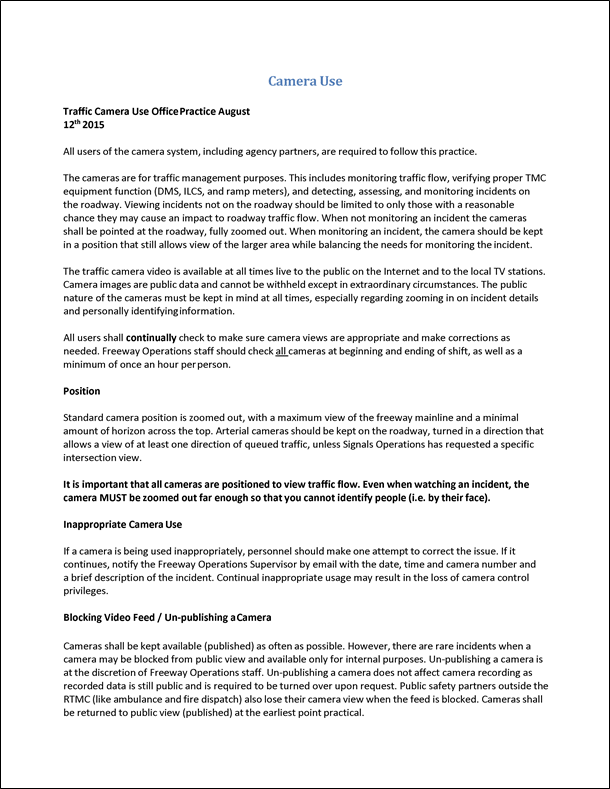
(Source: Minnesota Department of Transportation)
Figure 23: Sample scan. Camera Use Policies (page 2 of 2).
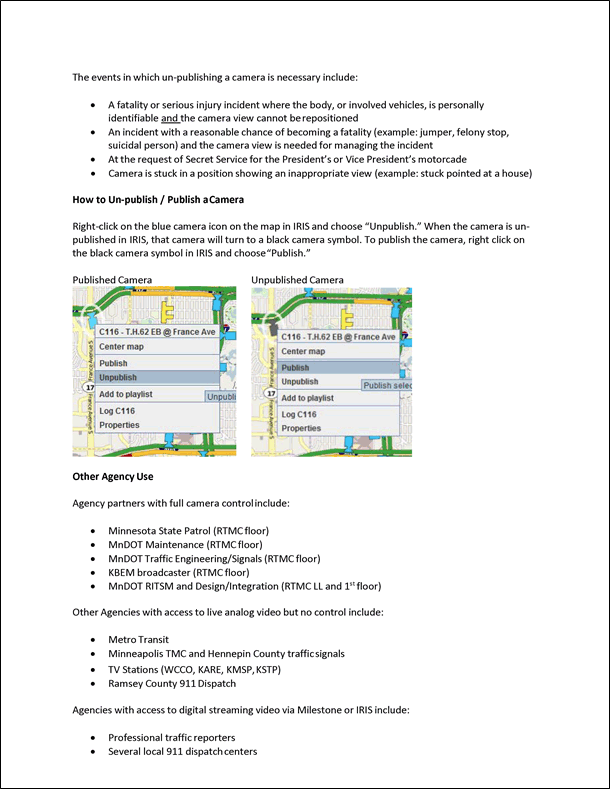
(Source: Minnesota Department of Transportation)
Figure 24: Sample scan. Minnesota Department of Transportation (MnDOT) Traffic Camera Imagery Recording and Distribution Policies (page 1 of 2).
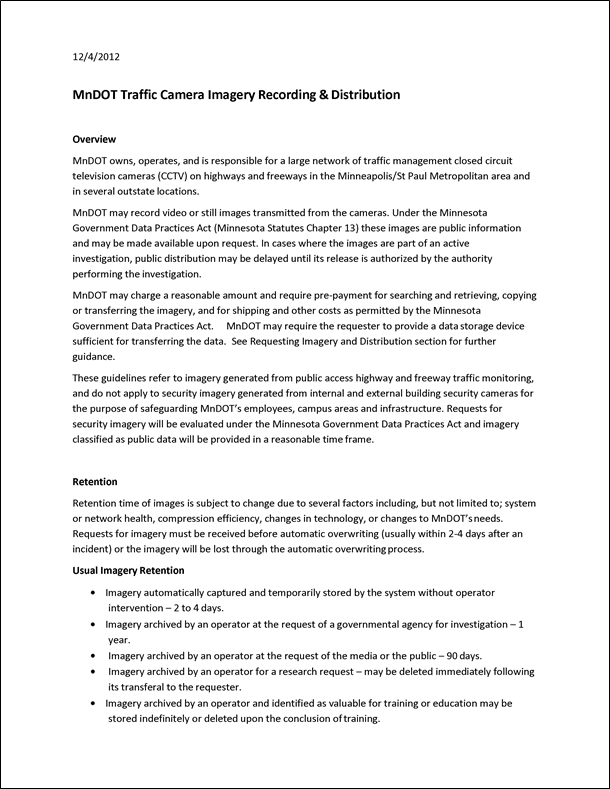
(Source: Minnesota Department of Transportation)
Figure 25: Sample scan. Minnesota Department of Transportation (MnDOT) Traffic Camera Imagery Recording and Distribution Policies (page 2 of 2).
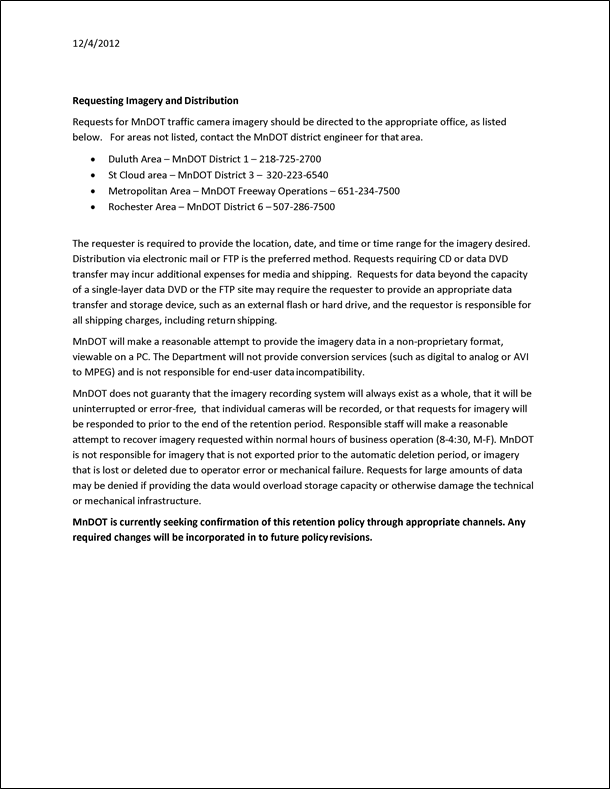
(Source: Minnesota Department of Transportation)
Figure 26: Sample scan. Policy for the Design and Operation of Closed-Circuit Television (CCTV) in Advanced Traffic Management Systems (page 1 of 11).
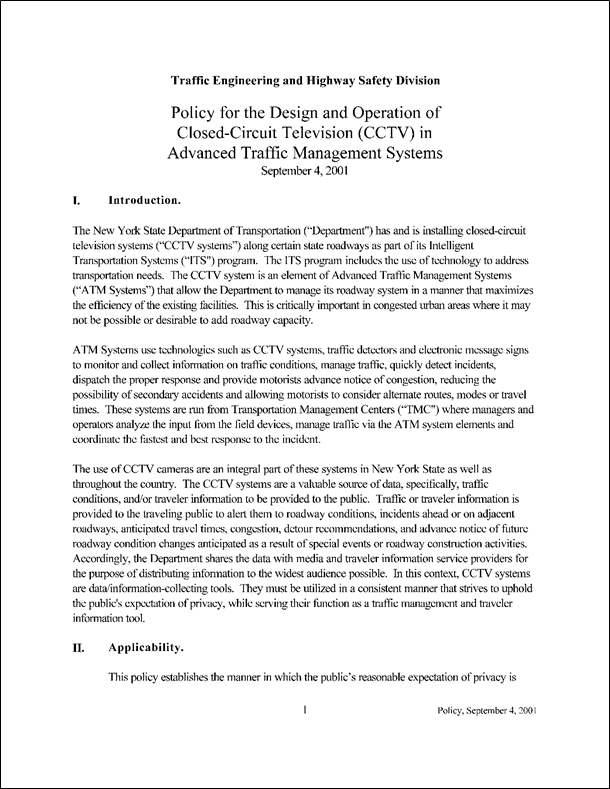
(Source: New York State Department of Transportation)
Figure 27: Sample scan. Policy for the Design and Operation of Closed-Circuit Television (CCTV) in Advanced Traffic Management Systems (page 2 of 11).
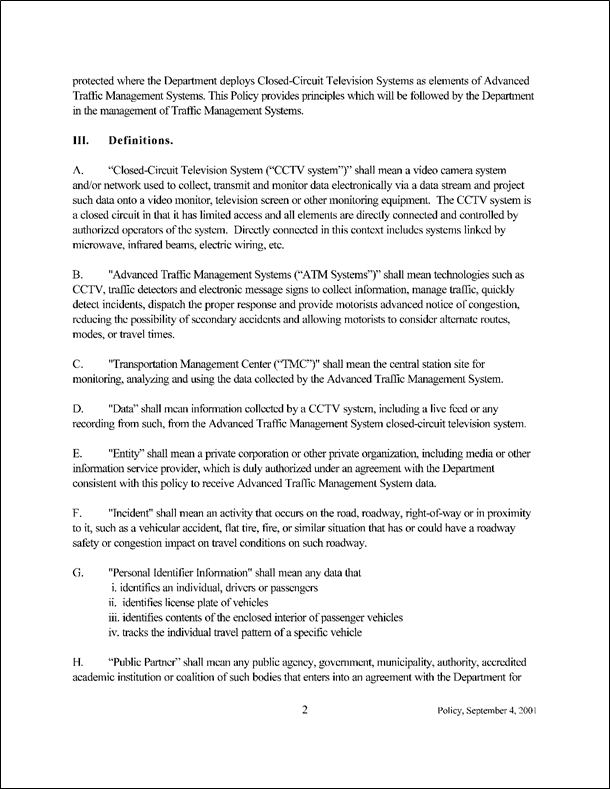
(Source: New York State Department of Transportation)
Figure 28: Sample scan. Policy for the Design and Operation of Closed-Circuit Television (CCTV) in Advanced Traffic Management Systems (page 3 of 11).
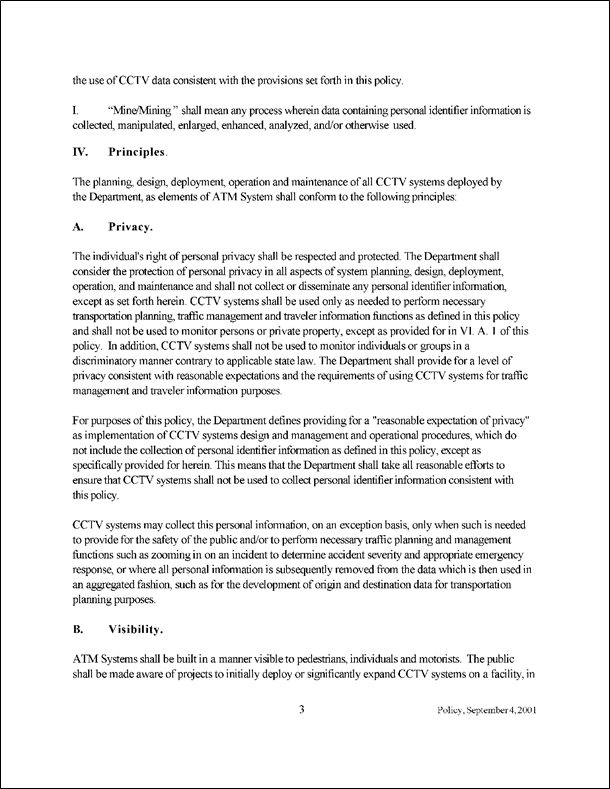
(Source: New York State Department of Transportation)
Figure 29: Sample scan. Policy for the Design and Operation of Closed-Circuit Television (CCTV) in Advanced Traffic Management Systems (page 4 of 11).
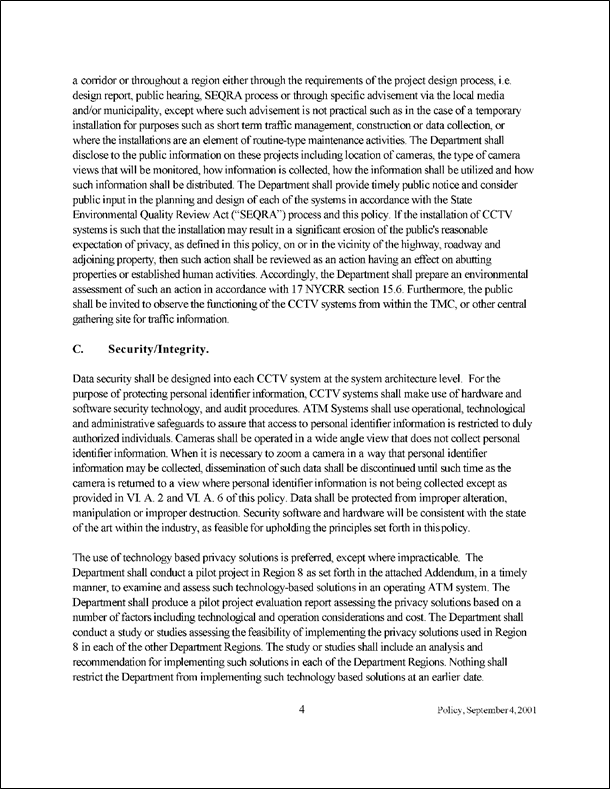
(Source: New York State Department of Transportation)
Figure 30: Sample scan. Policy for the Design and Operation of Closed-Circuit Television (CCTV) in Advanced Traffic Management Systems (page 5 of 11).
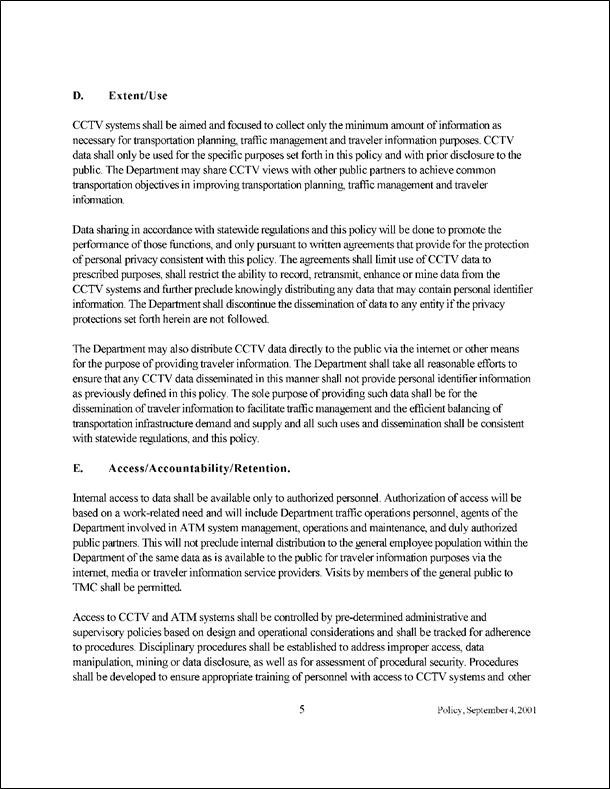
(Source: New York State Department of Transportation)
Figure 31: Sample scan. Policy for the Design and Operation of Closed-Circuit Television (CCTV) in Advanced Traffic Management Systems (page 6 of 11).
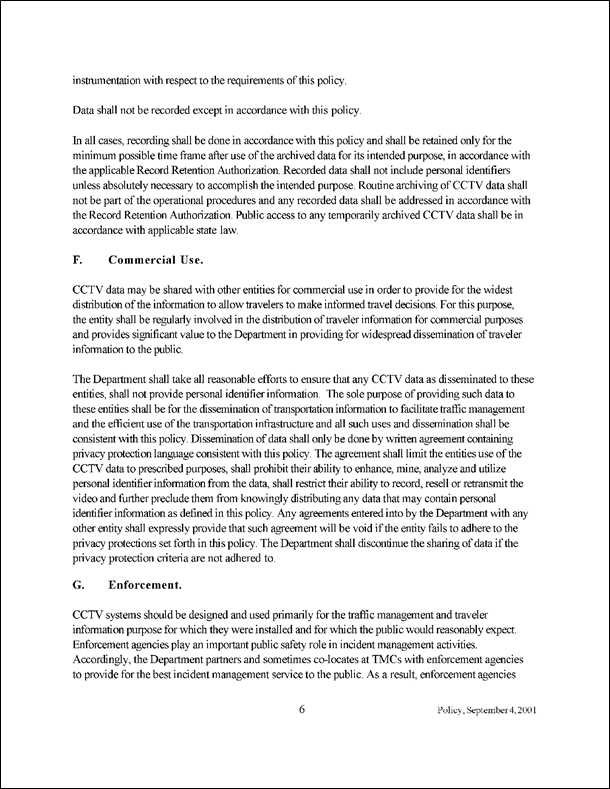
(Source: New York State Department of Transportation)
Figure 32: Sample scan. Policy for the Design and Operation of Closed-Circuit Television (CCTV) in Advanced Traffic Management Systems (page 7 of 11).
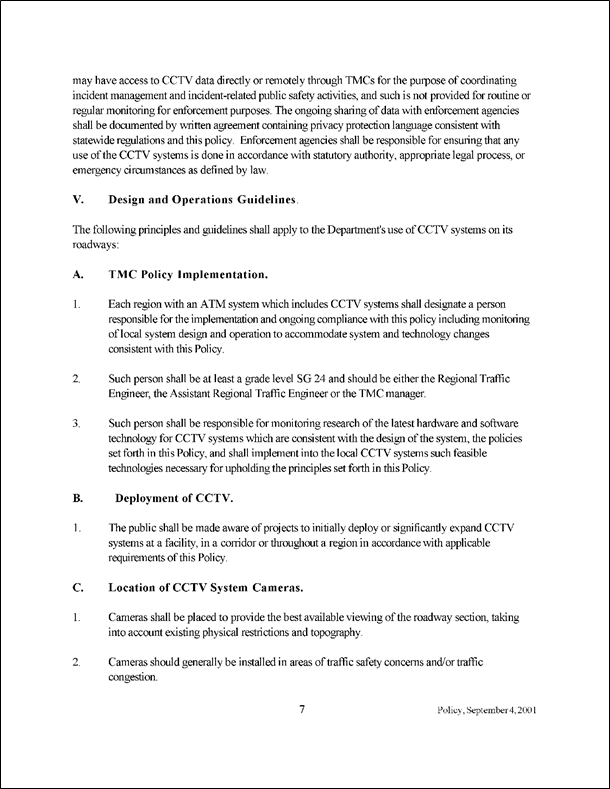
(Source: New York State Department of Transportation)
Figure 33: Sample scan. Policy for the Design and Operation of Closed-Circuit Television (CCTV) in Advanced Traffic Management Systems (page 8 of 11).
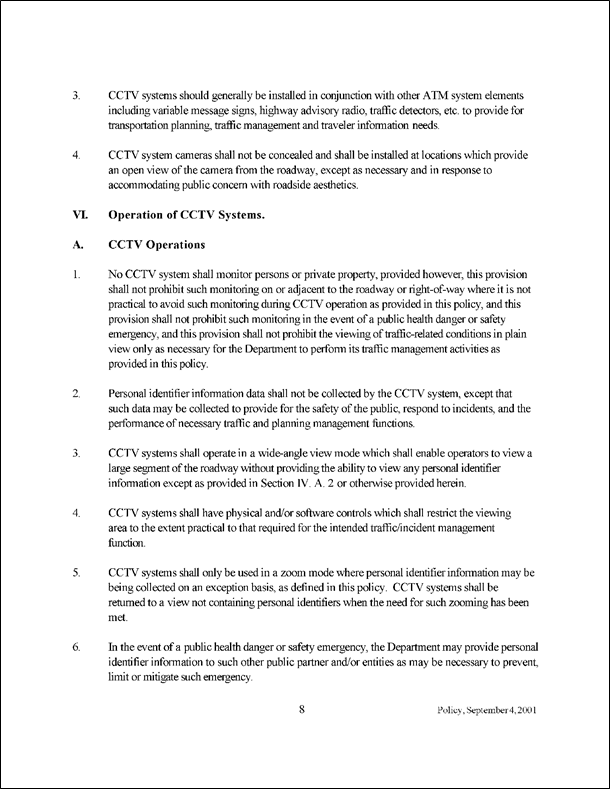
(Source: New York State Department of Transportation)
Figure 34: Sample scan. Policy for the Design and Operation of Closed-Circuit Television (CCTV) in Advanced Traffic Management Systems (page 9 of 11).
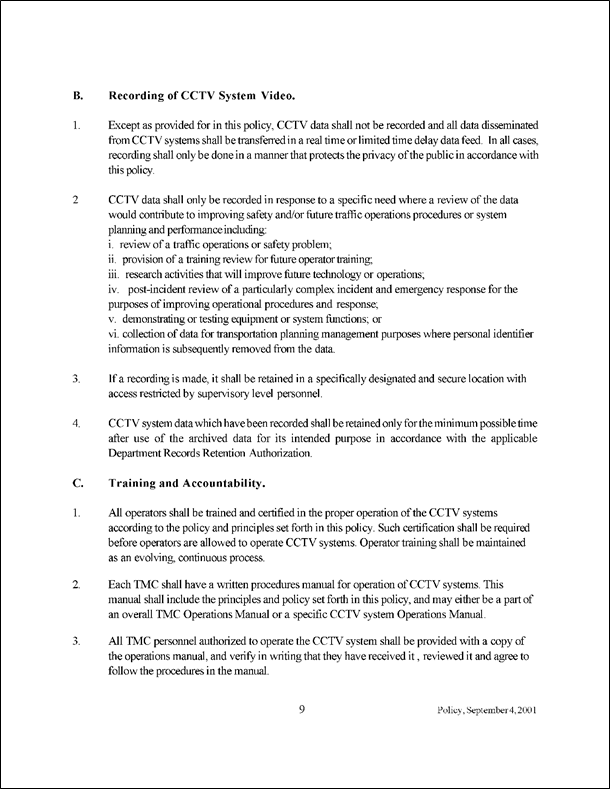
(Source: New York State Department of Transportation)
Figure 35: Sample scan. Policy for the Design and Operation of Closed-Circuit Television (CCTV) in Advanced Traffic Management Systems (page 10 of 11).
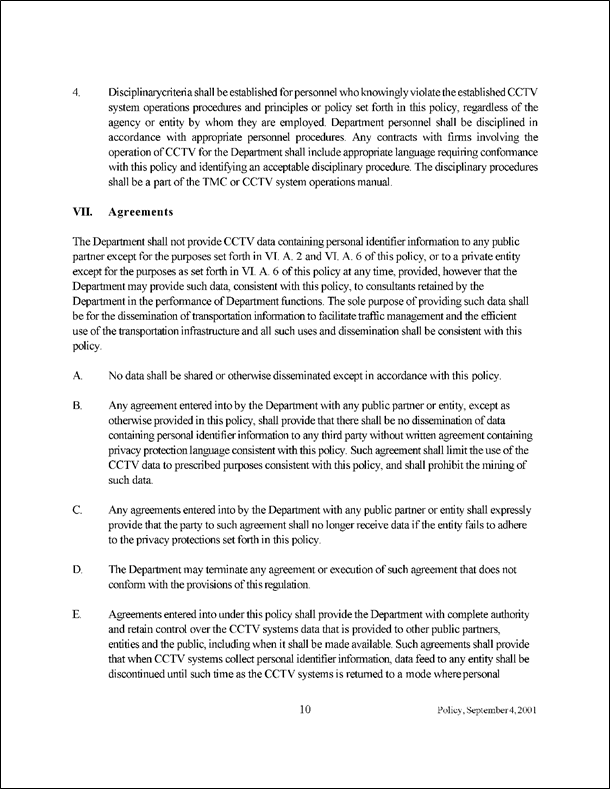
(Source: New York State Department of Transportation)
Figure 36: Sample scan. Policy for the Design and Operation of Closed-Circuit Television (CCTV) in Advanced Traffic Management Systems (page 11 of 11).
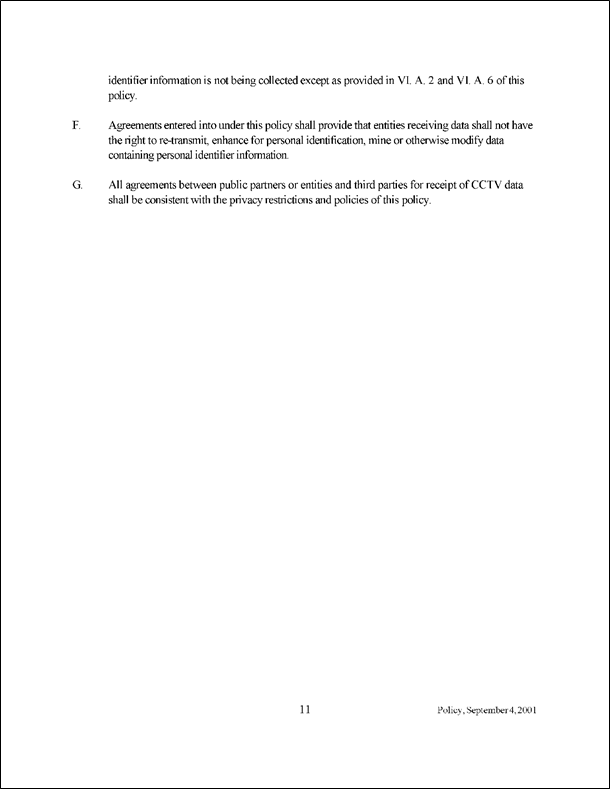
(Source: New York State Department of Transportation)
Figure 37: Sample scan. Niagara International Transportation Technology Coalition (NITTEC) Closed-Circuit Television (CCTV) Policy (page 1 of 1).
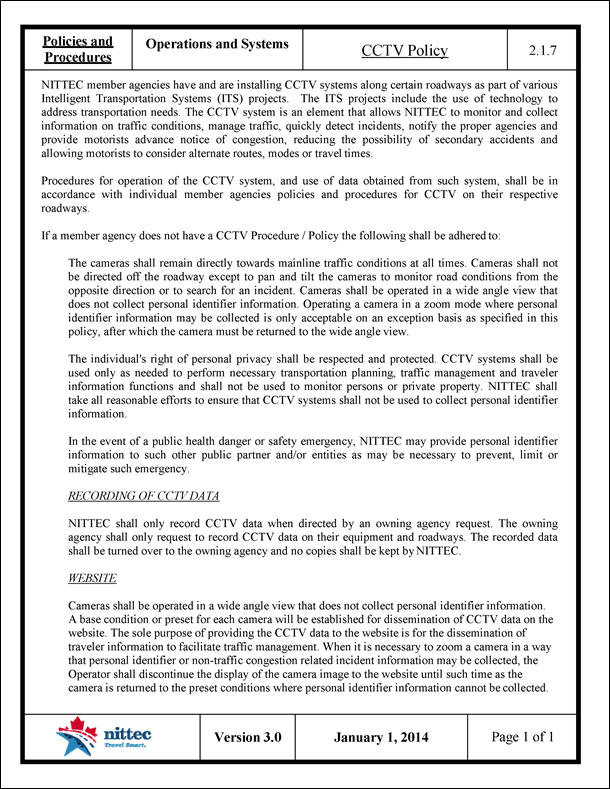
(Source: NITTEC)
Figure 38: Sample scan. Use of Closed-Circuit Television Highway Cameras Guidelines at the Oregon Department of Transportation (page 1 of 1).
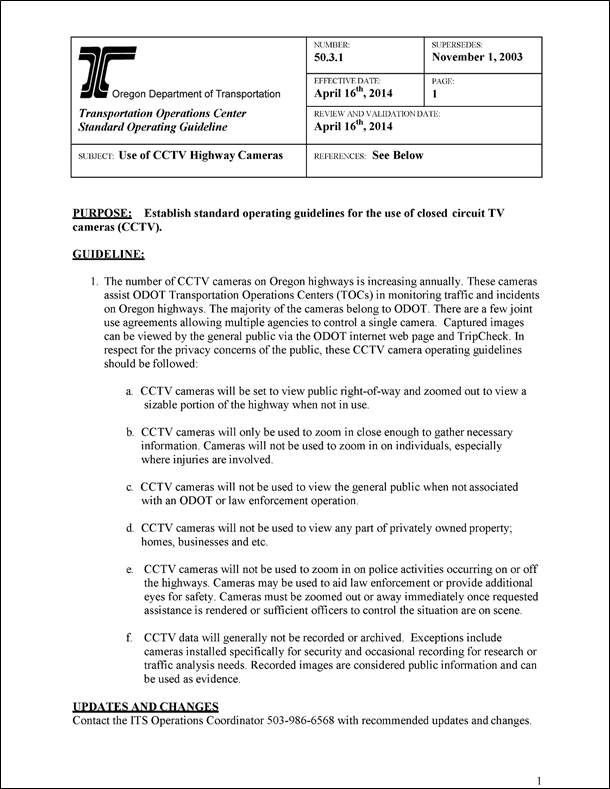
(Source: Oregon Department of Transportation)
Figure 39: Sample scan. Access to Tennessee Department of Transportation’s Live Video Feeds and Information Sharing Policies (page 1 of 1).
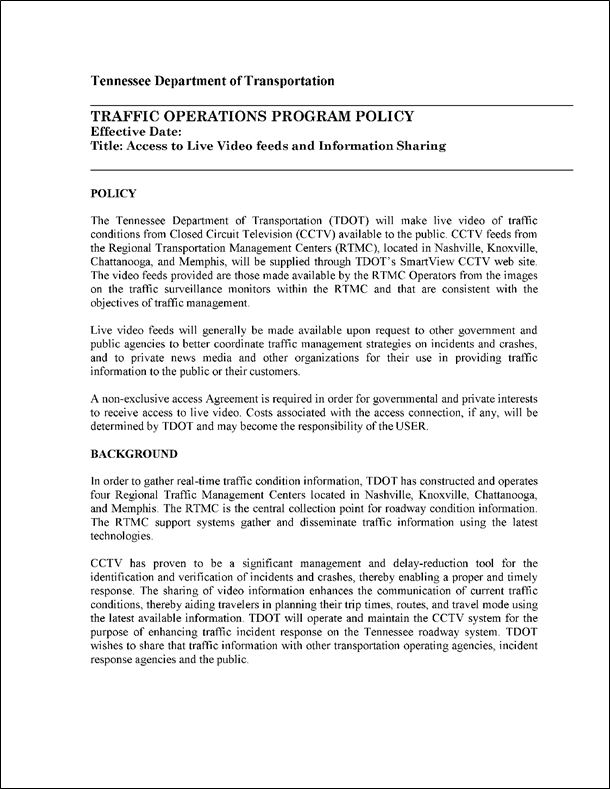
(Source: Tennessee Department of Transportation)
Figure 40: Sample scan. Responder Entity Users Access Agreement for Live Video and Information Sharing (page 1 of 6).
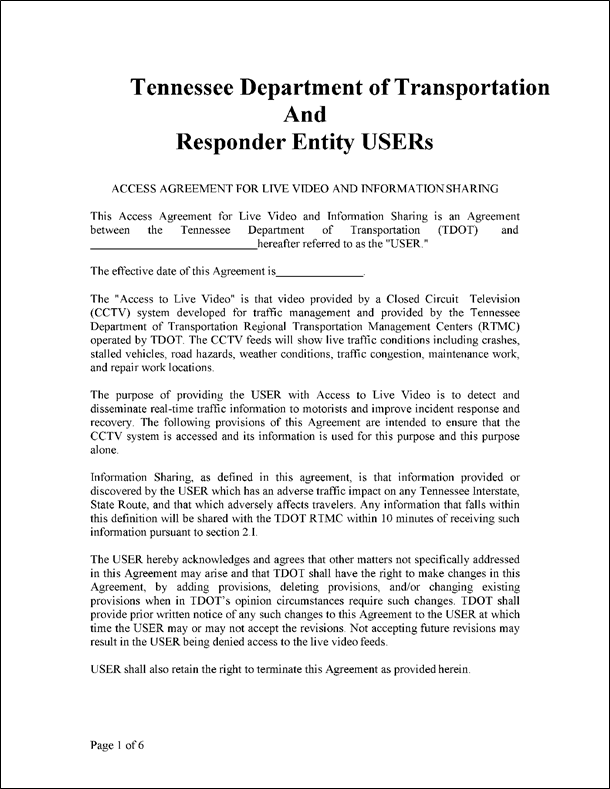
(Source: Tennessee Department of Transportation)
Figure 41: Sample scan. Responder Entity Users Access Agreement for Live Video and Information Sharing (page 2 of 6).
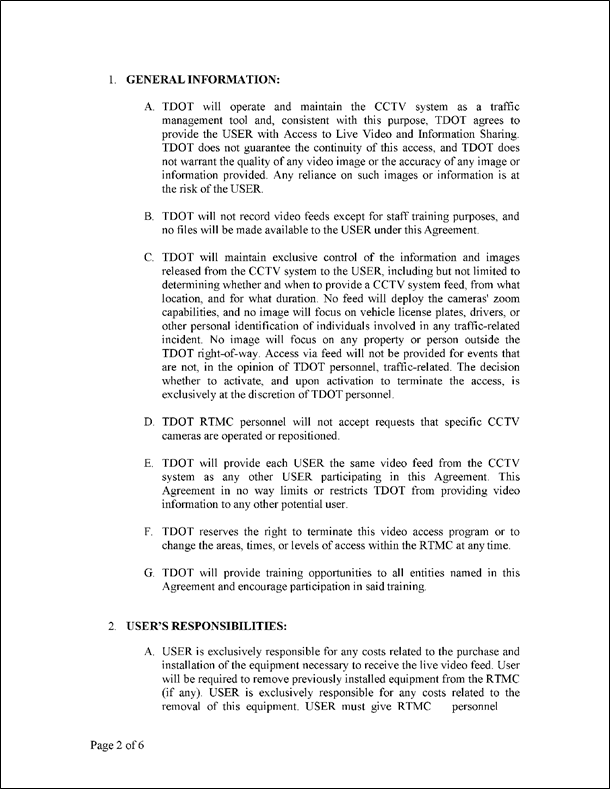
(Source: Tennessee Department of Transportation)
Figure 42: Sample scan. Responder Entity Users Access Agreement for Live Video and Information Sharing (page 3 of 6).
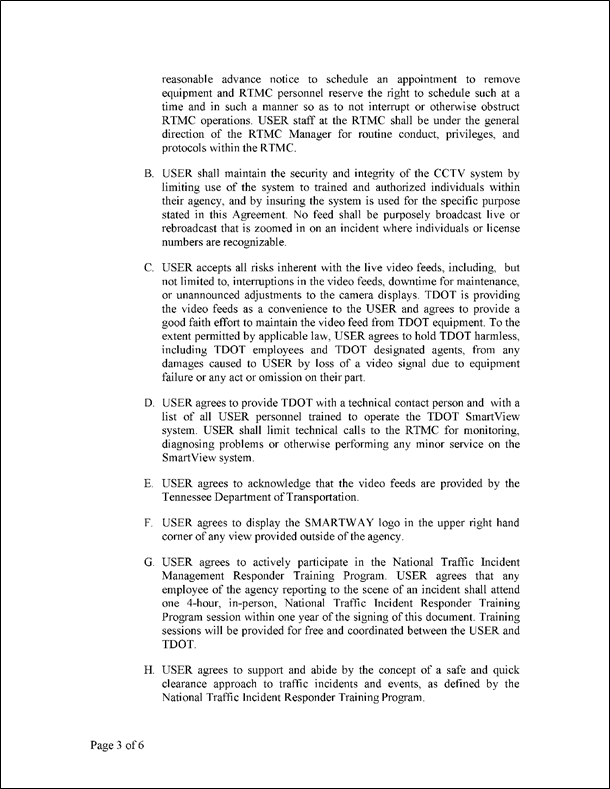
(Source: Tennessee Department of Transportation)
Figure 43: Sample scan. Responder Entity Users Access Agreement for Live Video and Information Sharing (page 4 of 6).
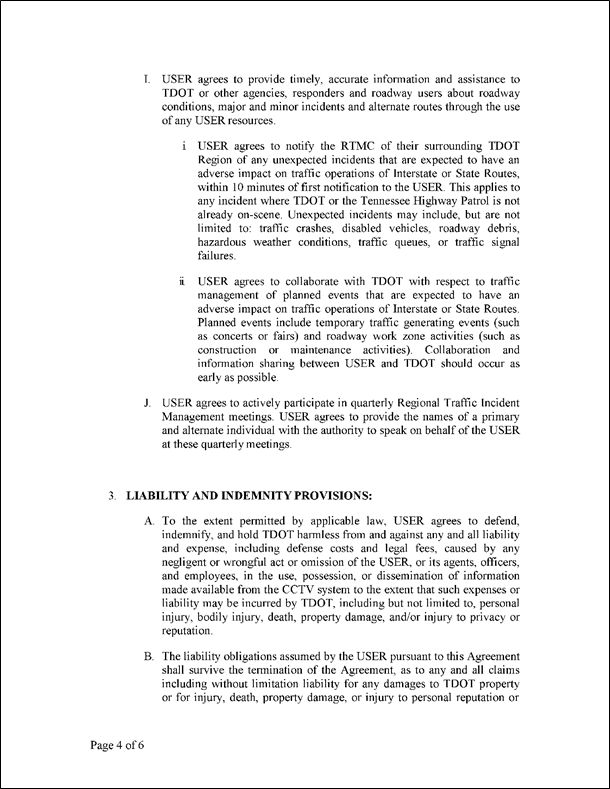
(Source: Tennessee Department of Transportation)
Figure 44: Sample scan. Responder Entity Users Access Agreement for Live Video and Information Sharing (page 5 of 6).
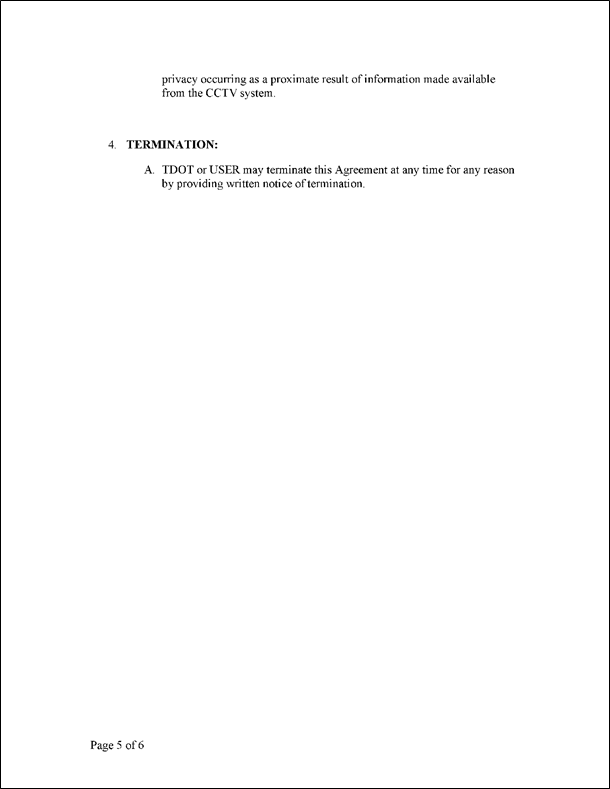
(Source: Tennessee Department of Transportation)
Figure 45: Sample scan. Responder Entity Users Access Agreement for Live Video and Information Sharing (page 6 of 6).
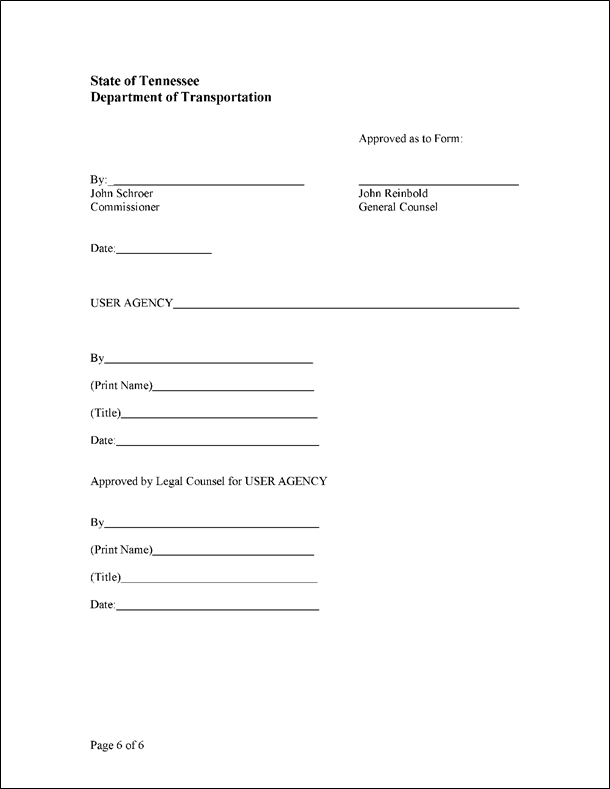
(Source: Tennessee Department of Transportation)
Figure 46: Sample scan. Private Entity Users Access Agreement for Live Video and Information Sharing (page 1 of 5).
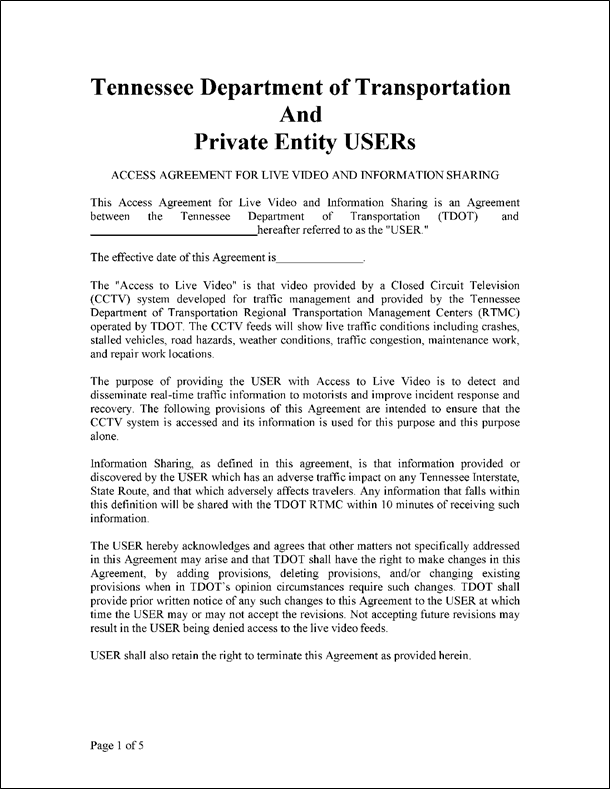
(Source: Tennessee Department of Transportation)
Figure 47: Sample scan. Private Entity Users Access Agreement for Live Video and Information Sharing (page 2 of 5).
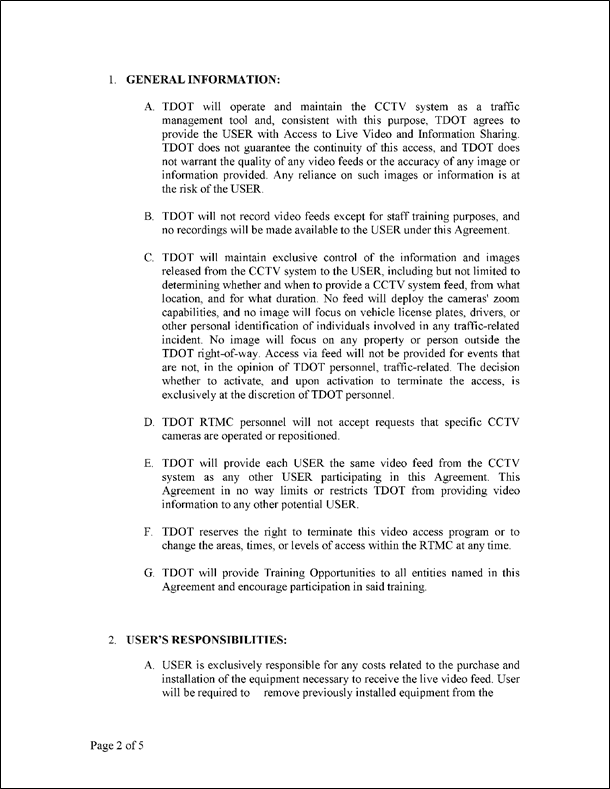
(Source: Tennessee Department of Transportation)
Figure 48: Sample scan. Private Entity Users Access Agreement for Live Video and Information Sharing (page 3 of 5).
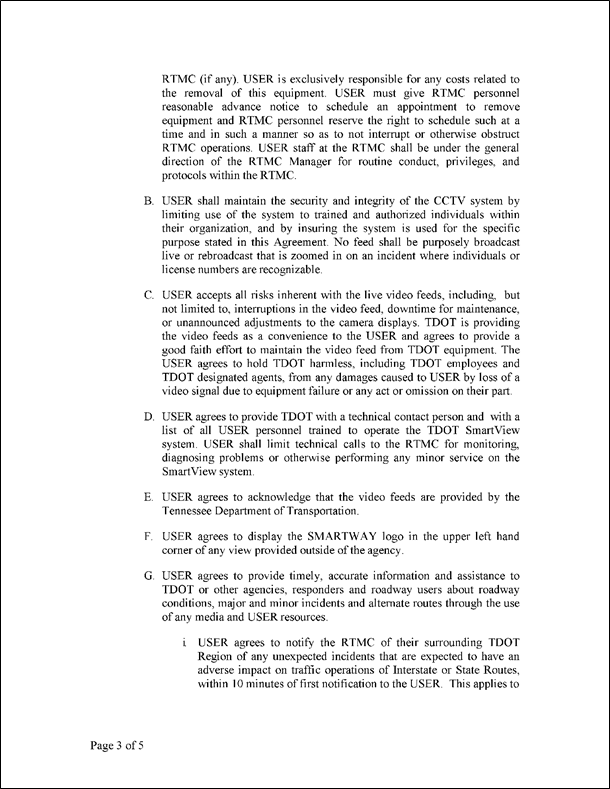
(Source: Tennessee Department of Transportation)
Figure 49: Sample scan. Private Entity Users Access Agreement for Live Video and Information Sharing (page 4 of 5).
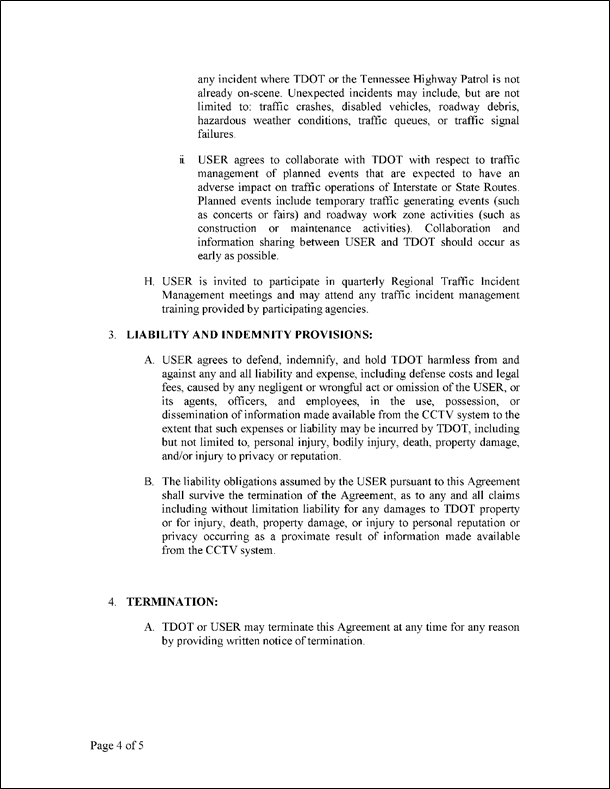
(Source: Tennessee Department of Transportation)
Figure 50: Sample scan. Private Entity Users Access Agreement for Live Video and Information Sharing (page 5 of 5).
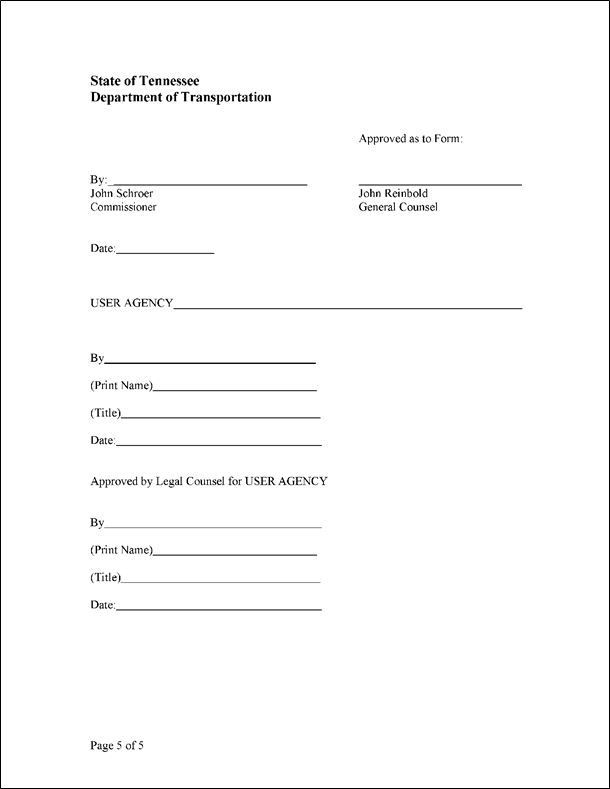
(Source: Tennessee Department of Transportation)
Figure 51: Sample scan. Video Utilization Agreement (page 1 of 1).
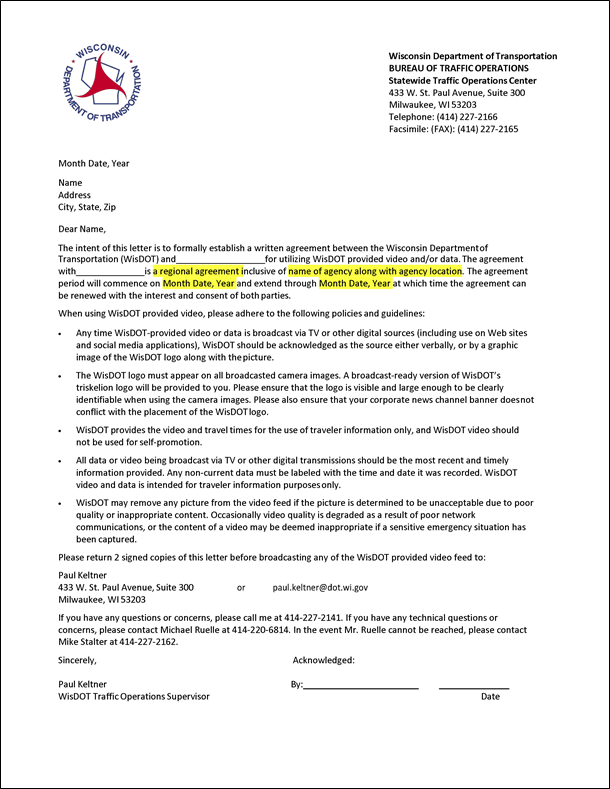
(Source: Wisconsin Department of Transportation)